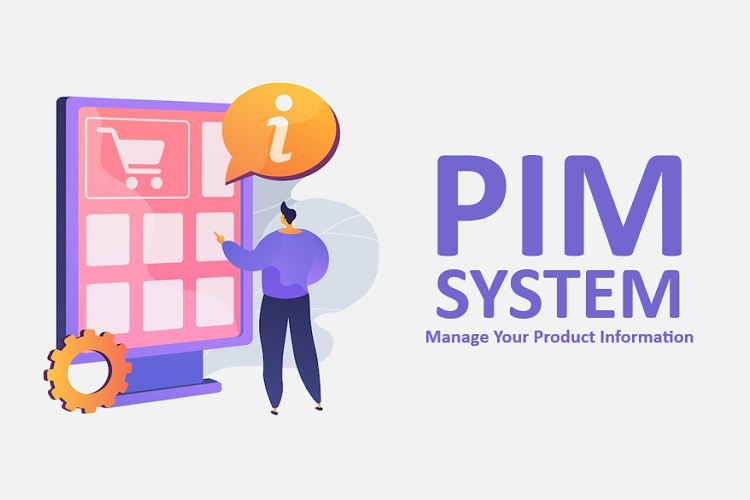Product information is more than just words on a page. It’s the backbone of your online presence, the bridge between your brand and its consumers. With the myriad of channels available to market and sell products, managing this information effectively becomes a top priority. Enter the world of PIM system. But with so many options out there, how do you choose the right one for your business? This guide aims to simplify that decision.
Understanding the Need for PIM in Today’s Online Shopping World
When you think about shopping today, it’s not just about popping into your local shop. With the internet, we can now buy stuff from nearly anywhere in the world! It’s like having a massive global market right at our fingertips. But for businesses, this means they have a big challenge.
Imagine trying to keep track of all your product details across different websites and stores? It would be super confusing, right? That’s where PIM comes into play. PIM, or Product Information Management, is a tool businesses use to keep everything about their products in one place. It helps them make sure that no matter where you’re shopping from, the product info you see is accurate and consistent. So, in a way, PIM is like the backstage crew that makes sure the show goes on without a hitch!
Why your eCommerce business need a PIM system
Product Information Management (PIM) systems play a critical role in supporting businesses in the dynamic world of online shopping by helping them stay competitive and address difficulties.
When e-commerce companies offer goods online, they obtain product information from several sources. Because of this, it could be challenging to maintain organization and ensure accuracy of the information.
A PIM system facilitates this process by centralizing the data and standardizing it throughout all of the locations where products are sold, which was complex due to the traditional system. Let’s explore the core features that can be use after the implementation of PIM system.
Inconsistencies and Complexities in Data
Data complexity and inaccuracy are typical for e-commerce enterprises as they deal with extensive and varied product information from several vendors. Accuracy and consistency across several sales channels are ensured by centralizing, standardizing, and organizing product data using a PIM system.
Multichannel Sales and Product Listing
Managing the vast amount of information on a product when it’s being sold in multiple locations, such as social media or a website, can be challenging. But a unique setup known as a PIM makes it possible.
However, a unique system known as a PIM streamlines the process by disseminating the product information consistently throughout, guaranteeing accuracy and improving the experience for those who wish to purchase it.
Meet Customer Demand
Customers in online retailers have high expectations regarding the products they wish to purchase. A product information management system (PIM) enhances product information by providing additional facts, images, videos, and other useful content.
Additionally, it aids in creating customized content for specific clientele or marketing strategies, increasing interest and likelihood of purchase. It might be difficult to keep track of how many products you have and to ensure that everyone is aware of them. Through system integration, a PIM system provides assistance.
Inaccuracies and Data complexity
Data complexity and inaccuracy are typical for e-commerce enterprises as they deal with extensive and varied product information from several vendors. Accuracy and consistency across several sales channels are ensured by centralizing, standardizing, and organizing product data using a PIM system.
Product Personalization and Enrichment
Online shoppers expect comprehensive and extensive product details. Product data can be enhanced with the addition of thorough descriptions, photos, videos, and other pertinent content using a PIM system. It also makes it easier to create customized content for particular clientele or marketing campaigns, which boosts engagement and revenue.
Inventory and Data Synchronization
It can be difficult to keep updated product information and constant inventory levels across many platforms. The danger of overselling or underselling is decreased when a PIM system interacts with inventory management systems and synchronizes data, guaranteeing real-time updates across all channels.
Time-to-Market and Adaptability
Agility is required in the fast-paced eCommerce industry. Businesses may maintain a competitive edge by swiftly introducing new items to the market, updating current product information, and responding to shifting market trends with the use of a PIM system.
Global Expansion and Regulatory Compliance
Regulations about product information differ between different regions. PIM systems facilitate worldwide expansion by maintaining and localizing product data by various regional standards, hence ensuring compliance.
Understanding PIM Systems: Breaking It Down
So, you’ve come across the term “PIM system” and are scratching your head, wondering what on earth it is. Don’t worry, we’ve all been there! Let’s break it down into simple terms.
Imagine you have a huge box where you can neatly store everything about a product you sell – from what it looks like and what it’s made of, to little details like its color or weight. Now, instead of a physical box, imagine a digital one that lives on your computer or in the cloud. This box, where you can keep and pull out any detail you need about your product, is essentially a PIM system.
In simpler words, a PIM system is like a digital storage room. Think of it as a virtual closet. When you want to tell someone (or many people) about your product, whether it’s on your website, in a store, or on social media, you can easily get the information from this closet. You won’t have to rummage through different places or folders. Everything’s in that one spot.
Why is this so cool? Well, if you’re running a business, especially one with lots of products, it’s a game-changer. No more mixed-up details, no more outdated product photos, and no more inconsistencies in how you talk about your product on different platforms. Your PIM system makes sure everything is uniform and up-to-date. So whether someone’s checking out your product on a mobile app or a billboard, they see the same information.
In a nutshell, a PIM system is your best buddy when it comes to organizing and sharing product details. It ensures that wherever your product shows up, it shines consistently.
Why is a PIM Solution Essential for Growing Businesses?
Picture this: your business is growing, and you’re ecstatic about it. New products are being added to your catalog, and you’re reaching out to customers through various channels – from your own website to social media and even third-party e-commerce platforms. It’s an exciting phase, but as with everything, growth brings its own set of challenges.
Think of your product information as a jigsaw puzzle. Each product detail, from its description and price to its images and specifications, is a piece of that puzzle. Now, imagine trying to put together multiple jigsaw puzzles simultaneously without a clear picture of what each should look like. That’s what managing product information without a centralized system feels like. It can get confusing, messy, and downright overwhelming.
Here’s a simple breakdown of problems you might run into:
Mismatched Product Details: Let’s say you updated a product’s price on your website but forgot to do the same on a third-party site where you also sell. This inconsistency can confuse customers and even lead to lost sales or trust.
Constant Manual Updates: Every time there’s a change, someone has to manually update it everywhere. It’s not just tedious; it’s time that could be better spent on other important tasks.
Oops, Made an Error!: Ever tried typing out a long report and found a typo or two? Now, imagine manually inputting data for hundreds or thousands of products. The chances of making mistakes skyrocket. And these aren’t harmless typos – they can mislead your customers or affect your sales.
Growing Pains: Remember the joy of adding new products to your catalog? Without a proper system, this joy quickly turns into a headache. The more products you add, the harder it becomes to keep track of everything.
In essence, without a reliable Product Information Management (PIM) solution, your growing business might just be setting itself up for a lot of unnecessary roadblocks. A PIM doesn’t just organize your product details; it keeps everything streamlined and consistent across all channels. It’s like having a trusty helper making sure every piece of your jigsaw puzzles fits just right.
So, as you chart the path for your business’s growth, consider investing in a PIM solution. It’s not just about making things easier but ensuring that your business runs smoothly and customers get accurate and consistent product information, no matter where they interact with your brand. After all, clarity and consistency are key to building and maintaining trust. And in today’s digital age, that’s more important than ever.
How to Pick the Best PIM System for Your Business
Alright, so you’re thinking about getting a PIM system. Cool! If you’re unfamiliar, PIM stands for Product Information Management. It’s like a digital assistant that helps you keep track of everything about your products. But how do you pick the right one? With so many options out there, it can feel a bit overwhelming. Don’t worry – here’s a quick rundown to help you out.
1. A Home for All Your Product Info
Imagine if all your product details, pictures, specs, and whatnot were scattered around your house. Messy, right? You need a single spot where everything’s kept. That’s what a ‘Centralized Data Repository‘ is all about. It’s like a big digital cupboard where everything’s neatly organized. When you’re looking at PIMs, make sure they have this!
2. Plays Well with Others
You probably use a bunch of other digital tools for your business. Maybe you’ve got an online store, or perhaps some inventory software. Your PIM should be friendly with these. In tech lingo, we call this ‘Integration Capabilities’. Simply put, your PIM should easily chat with other tools you use. It’s like making sure your new pet gets along with the old ones.
3. Ready to Grow with You
Your business isn’t going to stay the same size forever, right? As you grow, you’ll add more products and maybe even more sales channels. Your PIM should be ready for that adventure. So, when checking out options, see if they talk about ‘Scalability’. That’s just a fancy way of saying, “Hey, I’m ready to grow with you!”
4. Easy Peasy Lemon Squeezy
Okay, remember that one app or software you once downloaded and never used because it was too complicated? You don’t want that with your PIM. It needs to have a ‘User-friendly Interface’. This means it should be as simple and straightforward as using your favorite phone app. After all, you and your team will be popping in daily. It should be a breeze!
5. Make it Your Own
Your business isn’t a cookie-cutter model, so why should your PIM be? Look for systems that let you tweak things a bit. This is what folks mean when they say ‘Customization’. Just like you might add extra cheese to your pizza or pick a unique phone case, your PIM should let you adjust things so it feels just right for your business.
In a Nutshell…
Choosing the right PIM isn’t just a tech decision; it’s a business one. It’s about making your life easier and helping your business run smoother. So, when you’re on the hunt, keep these tips in mind. With the right PIM, managing your products will feel like a walk in the park. Happy hunting!
Selecting the Best PIM System: Tips for Businesses
When you’re on the lookout for a good Product Information Management (PIM) system, it’s a bit like shopping for a new car. You don’t just want something that looks good; you want something reliable, something proven, and something that fits your unique needs. So, where do you start?
Research Top PIM Companies
There are some big players in the PIM world. These companies have been around the block, and they know their stuff. How can you spot them? Well, for starters, they have a bunch of happy customers singing their praises. They’ve got features that make your life easier, and they’re always happy to show off their system in a live demo. So, before diving in, take a moment to read what other businesses are saying about them. Check out their case studies and customer reviews. If you’re still curious, reach out to them and ask for a live demonstration. It’s like taking that new car for a test drive – you’ll get a feel for how everything works.
Set Up Your New PIM System
So, you’ve picked out your shiny new PIM system. Congrats! But hold on, the work isn’t over just yet. Setting it up correctly from the start will save you a lot of headaches down the road.
First things first, you’ve got to move all your product data from wherever it is now to this new system. This process is a bit like moving homes – you need to ensure everything is packed correctly, so it arrives safely at its new destination.
Once your data’s settled in, it’s training time. Gather your team and make sure everyone knows how to use the new system. It’s like getting to know the features of your new car – where’s the AC, how do you switch on the fog lights, and what’s that button on the dashboard do? Training ensures everyone’s comfortable and confident using the new PIM system.
Lastly, remember that a PIM system isn’t a ‘set it and forget it’ kind of tool. It’s more like a garden – it needs regular care and attention. So, keep an eye on it, update it as needed, and watch out for any new tools or features that could help your business run even smoother.
Conclusion: The Digital Future and the Power of PIM
In today’s world, where shopping happens both in physical stores and online, having the right product info is more important than ever. It’s like having a trusty navigator on a journey. When businesses choose a great PIM system, they’re not just managing data; they’re setting themselves up for success in the digital age. It’s about keeping things accurate and consistent, no matter where they sell. So, think of PIM as your best guide in this digital adventure, helping you steer through the complexities and reach new heights.











